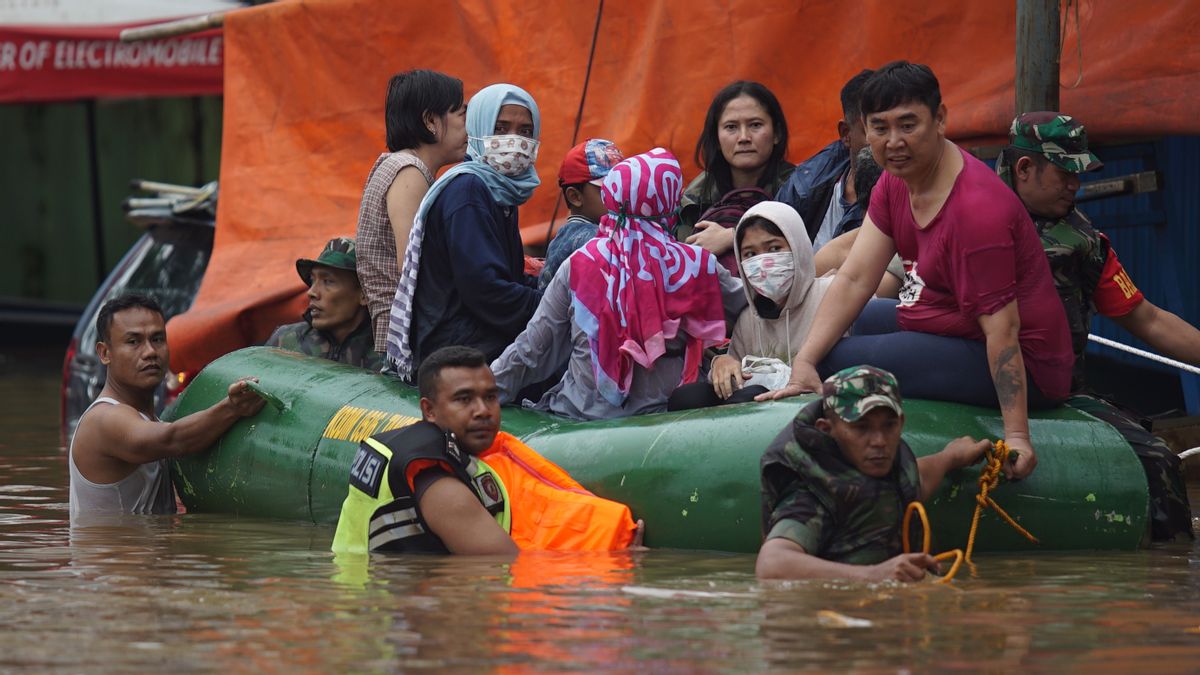JAKARTA - Operation to accelerate rain fall using weather modification technology (TMC) is successful. The collaboration of the Agency for the Assessment and Application of Technology (BPPT), the Indonesian National Army (TNI), and the National Disaster Management Agency (BNPB) has succeeded in reducing the intensity of moderate-to-heavy rain in the Greater Jakarta area.
Head of the Center for Data, Information and Public Relations of BNPB, Agus Wibowo, explained that the seedlings that were lowered from the plane were hygroscopic substances such as 6.4 tons of table salt (NaCl) in cloud seeds that had the potential for rain. The salts should be fine grains with a diameter of 10-50 microns.
This salt forms water vapor droplets. Artificial rain is very much influenced by how much and how little clouds are above the area that needs rain. The more clouds, the more stimulation that can be given. This also affects the rainfall that will fall.
"Based on the BPPT report, the rain has been successfully poured down in the northwest and southwest waters of Jabodetabek. This report refers to satellite data that shows the areas where rain has occurred," Agus told reporters, January 8.
Seeing TMC activities on Tuesday, December 7, CN 295 and Casa 212-200 aircraft carried out four cloud seeding sorties covering the southwest, west, northwest areas.
In the first sorti using CN295, 2.4 tons of NaCl seedlings were spread in the western to southwestern areas of Jabodetabek. The next sorti with Casa 212-200 with a capacity of 800 kg seedlings distributed seedlings in the waters of the Sunda Strait.
The third sorti, seedlings are spread in the northwest of Jabodetabek, while the last sorti, with CN 295, of 2.4 tons of seedlings, are sown in the western to northwestern areas of Jabodetabek. Seeing the success of reducing the quantity of rain, the government will continue to carry out TMC operations to anticipate extreme weather, especially in Jabodetabek.
However, there is something that must be considered in carrying out TMC operations. TMC for flood disaster management in Jabodetabek and its surroundings, of course, must pay attention to cloud growth. This is an important factor that must be monitored on an ongoing basis.
"Therefore, in order to help observe the weather and cloud conditions in the target area, BPPT is working with BMKG to analyze the weather data available from the radar of the Cengkareng Meteorological Station," said Agus.
For information, TMC operations via fixed-wing aircraft have carried out 20 flight sorties with a total of 32 tons of NaCl seedlings.
The application of TMC aims to reduce rain to areas that are safe and away from residential areas or before clouds enter densely populated areas, such as in the Sunda Strait or the Java Sea.
The rain that fell was modified by the use of sodium chloride (NaCl), which was spread to seed clouds via Casa 212-200 and CN-295 aircraft. So, the rain still falls. It's just earlier before going down to Jabodetabek.
The English, Chinese, Japanese, Arabic, and French versions are automatically generated by the AI. So there may still be inaccuracies in translating, please always see Indonesian as our main language. (system supported by DigitalSiber.id)













